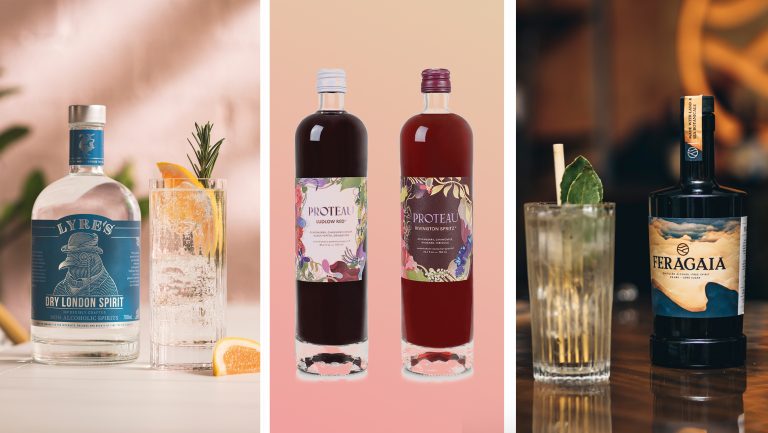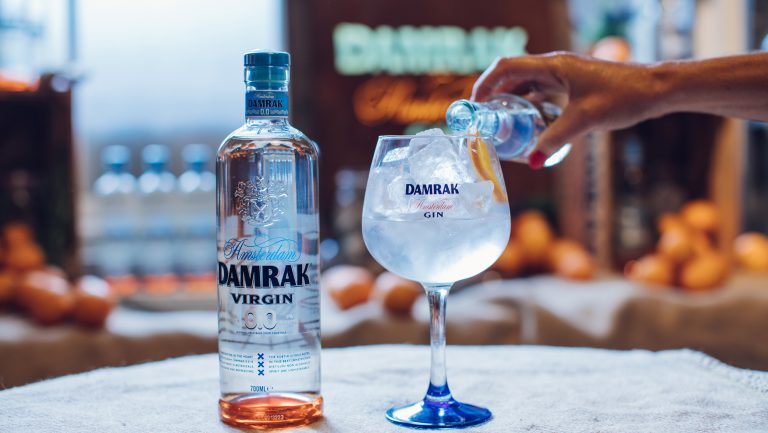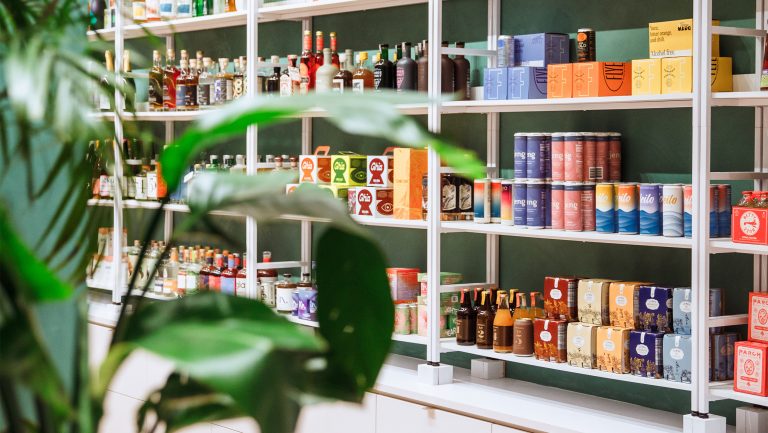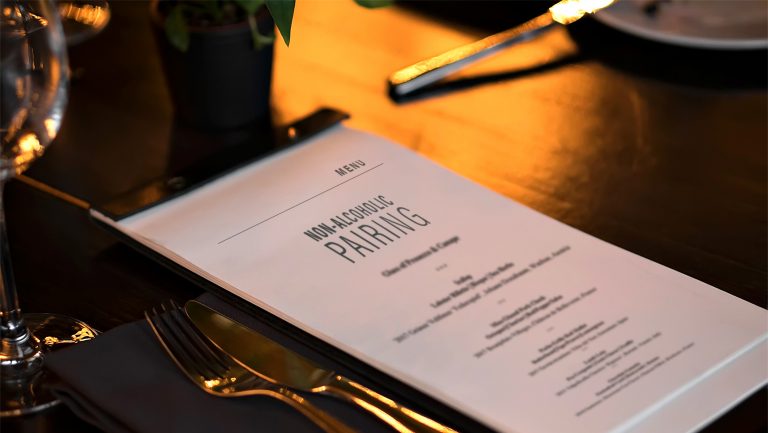What do you call a beverage that professes to be a spirit but doesn’t contain any alcohol? There are a number of terms, including virgin, zero proof, botanical drink, and non-alcoholic spirit, to name a few. In the past few years, in response to the rise of the sober-curious movement, a growing number of new brands have entered the market, some created as non-alcoholic replacements for traditional spirits, others representing themselves as something entirely new.
They’re following the success of Seedlip, the first distilled non-alcoholic spirit, which came to market in 2015 and has since been acquired by Diageo.
According to the U.S. Code, “The terms ‘distilled spirits’, ‘alcoholic spirits’, and ‘spirits’ all refer to the substance known as ethyl alcohol, ethanol, or spirits of wine in any form…” By that definition, non-alcoholic spirits are not spirits at all, although they are designed to fill the same role: sippable, mixable, complex drink ingredients intended to be enjoyed by adults. (Indeed, non-alcoholic spirits often cost the same price as their alcoholic counterparts.)

Don’t miss the latest drinks industry news and insights. Sign up for our award-winning newsletters and get insider intel, resources, and trends delivered to your inbox every week.
Achieving Textural Complexity Without Alcohol
Mark Livings of Australian-brand Lyre’s Non-Alcoholic Spirits, admits that achieving optimal texture and flavor for alcohol-free spirits is difficult. “Ethanol is performing a number of flavor and experience-enhancing aspects to the original beverages,” he says. Livings enumerates alcohol’s advantages: It acts as a solvent, which carries more flavor and perfume compounds than water or fat; it’s an agitant, inflaming your palate and throat, which increases flavor intensity; and it’s a thickener, adding a viscous, glycolic quality to the liquid.
One method to help recreate the texture and flavor of an alcoholic spirit is to distill the product with alcohol and then remove it. Alcohol and water distill at different temperatures, which works to separate the ethanol and water-based distillations called hydrosols. Category leader Seedlip was the first to use this method, borrowing the technique from a 17th-century book called The Art of Distillation. Seedlip individually distills each botanical with alcohol and then re-distills them to remove the alcohol.
Spiritless’ Kentucky 74, a whiskey alternative meant to imitate the flavors of bourbon, uses neutral grains and wood char under a highly calibrated temperature and pressure control to extract certain flavors you’d expect from barrel aging. Like Seedlip, once Spiritless runs the extraction process with alcohol, the spirit undertakes a second distillation to separate off the alcohol, leaving oils and tannins, which imparts some of the texture and astringency of alcohol.
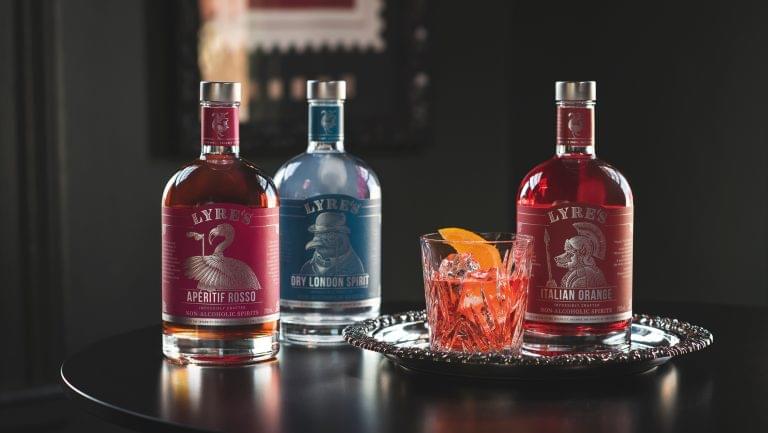
Distilling with Water
Damrak, an Amsterdam gin producer owned by Lucas Bols, spent many years developing Damrak Virgin 0.0. The company wanted to create a product with the same qualities as its gin, especially its signature juniper and citrus notes. Piet van Leijenhorst, Lucas Bols’s master distiller, said, “We realize that we cannot compensate for the influence of alcohol in the final taste. But we are close.”
Damrak uses non-alcoholic distillation, but it adds certain elements it believes can imitate the taste of gin, such as ginger and a higher concentration of bitter components. The result is a gin-like, non-alcoholic spirit with a kick at the end.
For Bill Garnock, cofounder of Scottish non-alcoholic spirit Feragaia, quality water is especially critical for non-alcoholic spirits. His product, which is not crafted to imitate a whisky, is distilled in the Lowlands of Scotland (where the water source is pristine) and incorporates 14 botanicals, some of which—black currant leaf, chamomile, bay leaf, and seaweed—are locally sourced. The process involves two non-alcoholic distillations: one with the more delicate botanicals such as flowers and leaves, and a second with such tougher botanicals as roots and spices. Those are then blended with water.
Compounding vs. Distillation
An alternative to distillation is compounding, a process that involves mixing such ingredients as extracts, sugar, acids, and preservatives together with water. Lyre’s decided on compounding because the company believes it produces a better taste.
“It was our mission to deliver a flavor profile as close as possible to the original spirits. With traditional distillation combined with de-alcoholization or with steam distillation, you end up with [a]… watery beverage,” describes Livings. Lyre’s opted to create something analogous to existing spirits, with a range of 13 stand-ins for products like gin, rum, and cordials. “It was always our mission to recreate the back bar and simplify non-alcoholic serves,” says Livings. “We wanted to be entirely frictionless—so you can make what you know, and simply reach for a different bottle if you want a no- or low-alcohol version of a drink.”
John deBary, founder of Proteau, drew on his experience as a bartender and beverage director mixing drinks at some of New York’s top bars and restaurants when creating his first product, Ludlow Red. By compounding a mix of blackberry juice, fig vinegar, and extracts such as black pepper and dandelion, and eschewing preservatives, Ludlow Red is more like a fortified wine or amaro than strictly a spirit, deBary describes.
His goal was to hit the right balance you would expect with a traditional cocktail, he says: “There are flavor elements that you expect from a fancy drink—there’s heat… and bitterness.” He adds that there are other structural elements you sense in your mouth, such as acidity.
Roger and Justin Branon Rodriguez of Woodnose Drinks created Sacré on their family-owned maple syrup farm in Vermont. A combination of maple vinegar, maple syrup, and coffee, Sacré contains complex dark tones that give it an amaro feel. “If you compare it to anything in the market today, it’s an extremely complex example of Kahlua, but even crazier,” says Justin Branon Rodriguez, “There’s not really a spot for it.” Rodriguez suggests using Sacré in such drinks as the Espresso Martini or as a base in creative cocktails.
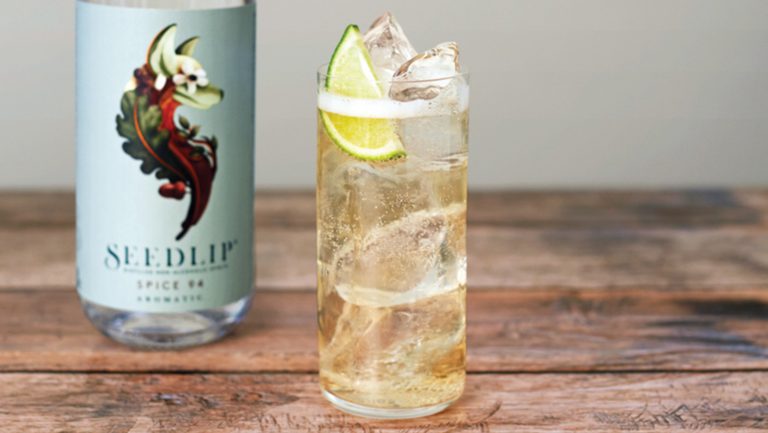
How They Work On-Premise
For some bartenders and beverage managers, the fact that a non-alcoholic spirit isn’t classifiable is a benefit. Julia Momose, partner and creative director at Kumiko in Chicago, prefers non-alcoholic spirits that don’t “carry the names that they are trying to emulate but will never taste like.”
“What I’m looking for is an ingredient that stands alone,” says Momose, “Something that will lend something to the drink that no other product is doing, or is just doing it better than everyone else, or something that I can’t make myself.”
Momose uses Seedlip’s Garden 108 and Spice 94 because she likes the aromatics and the ways in which they lend themselves to mixing in cocktails. She also appreciates that because the products are clear, they don’t alter the color of drinks.
Laura Silverman, founder of Booze Free in DC, a non-alcoholic lifestyle website, asserts that the unprecedented period of recent creativity in the zero-alcohol space is a positive industry development, particularly for bartenders, as the sober-curious movement evolves. “I realize that there could be more nuance and complexity to alcohol-free drinks with zero-proof spirits,” she says.
“You have a widening goalpost of what a spirit is,” argues Feragaia’s Garnock, “and that should be encouraged, because that only brings in more customers, more people, and everyone in the whole circle of drinking consumption can benefit.”

Dispatch
Sign up for our award-winning newsletter
Don’t miss the latest drinks industry news and insights—delivered to your inbox every week.
Derek Brown is an expert on spirits and cocktails who is based in Washington, D.C. He is the author of Spirits, Sugar, Water, Bitters: How the Cocktail Conquered the World. Follow him on Twitter and Instagram @ideasimprove.

